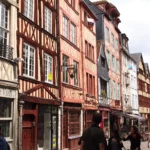Last Updated on 19/11/2023
An old city with its own traditions, Schwäbisch Hall lies a bit off the tourist track. But it is certainly worth to visit. Schwäbisch Hall is a part of Castle Road (Burgenstrasse) – very good tourist road, with various attractions, although not so gut known as Romantic Road.
In addition to the old city centre, you can see the Darmstadt Madonna – the famous painting by Hans Holbein the Younger (and a couple of other famous paintings), the Comburg monastery and the Wackershofen open-air museum.
Other towns of Castle Road – #burgenstrasse
Schwäbisch Hall. 2. Pie and Spring Festival
Schwäbisch Hall 3. Museums and Comburg Kloster
Caslte road part 4. Romantic Franconia map
Castle Road. 3. From Sinsheim to Rothenburg ob der Tauber
Rothenburg ob der Tauber
Dennenlohe. Rhododendron Garden
Schwäbisch Gmünd and Aalen

A little history
The settlement at this place has existed for a long time, since salt was mined here by the Celts already 500-100 BC. The name Hall is typical of salt mining sites. We can remember Hallstatt, Hallein, Bad Reichenhall – all this tourist sites have a salt mines.
The city belonged to the Duchy of Franconia, but in the 12th century passed to the Swabians, the Stauffers. And “Schwäbisch” was added to its name.
In the 12th century (presumably by the decision of Friedrich Barbarossa), the printing of coins, hellers began. They spread widely throughout the German lands.
From the end of the 13th, Schwäbisch Hall received the status of an imperial city and was governed by the city council.
Several times it burned badly, in the 18th century two-thirds of the old city was destroyed by fire.
Schwäbisch Hall map
Schwäbisch Hall is located on the steep slopes of Kocher, which makes it especially picturesque.
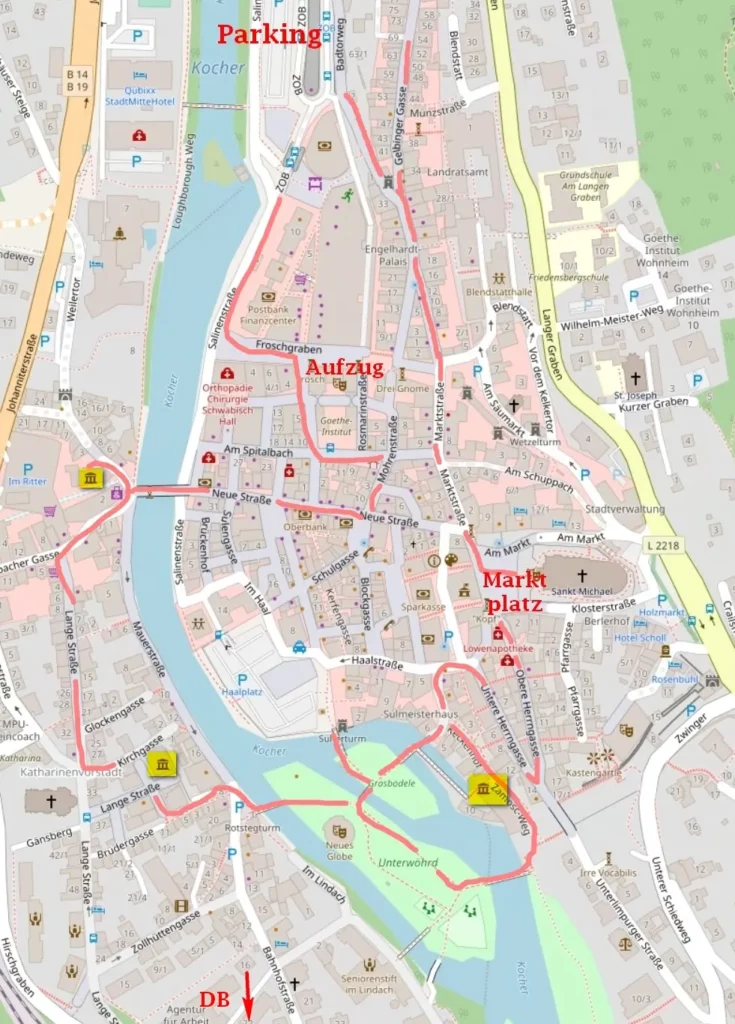
Schwäbisch Hall what to see
Suppose we parked in a large parking lot P9 by the river. Then the first to start with Gelbinger Gasse, going up to it on foot or by elevator (Aufzug).
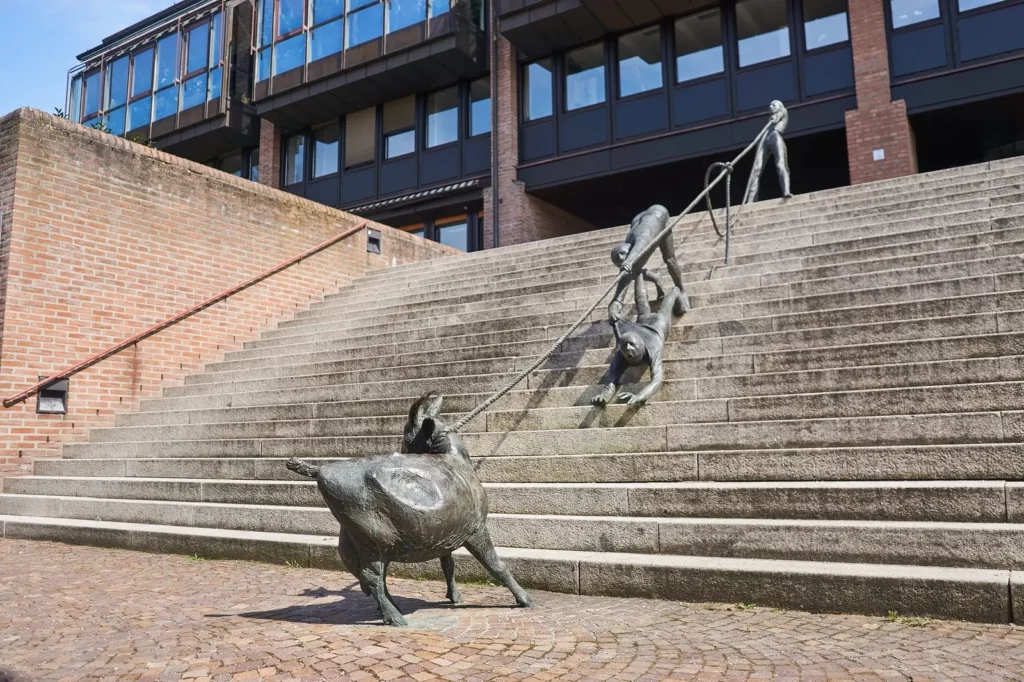



Marktplatz and town hall.

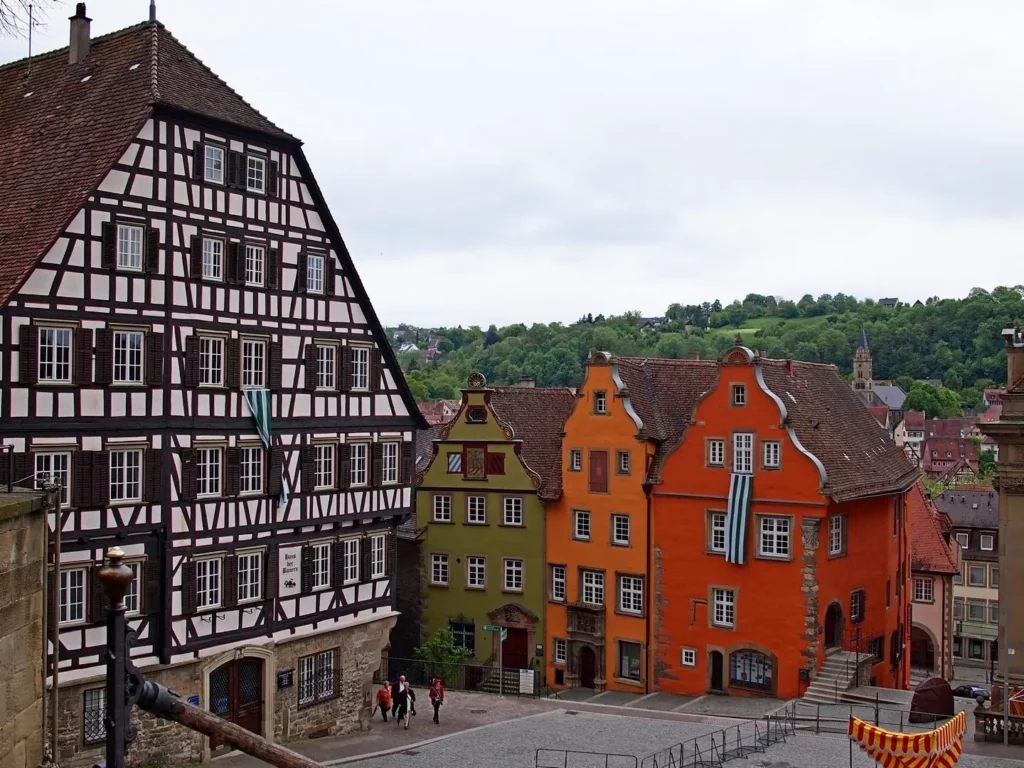
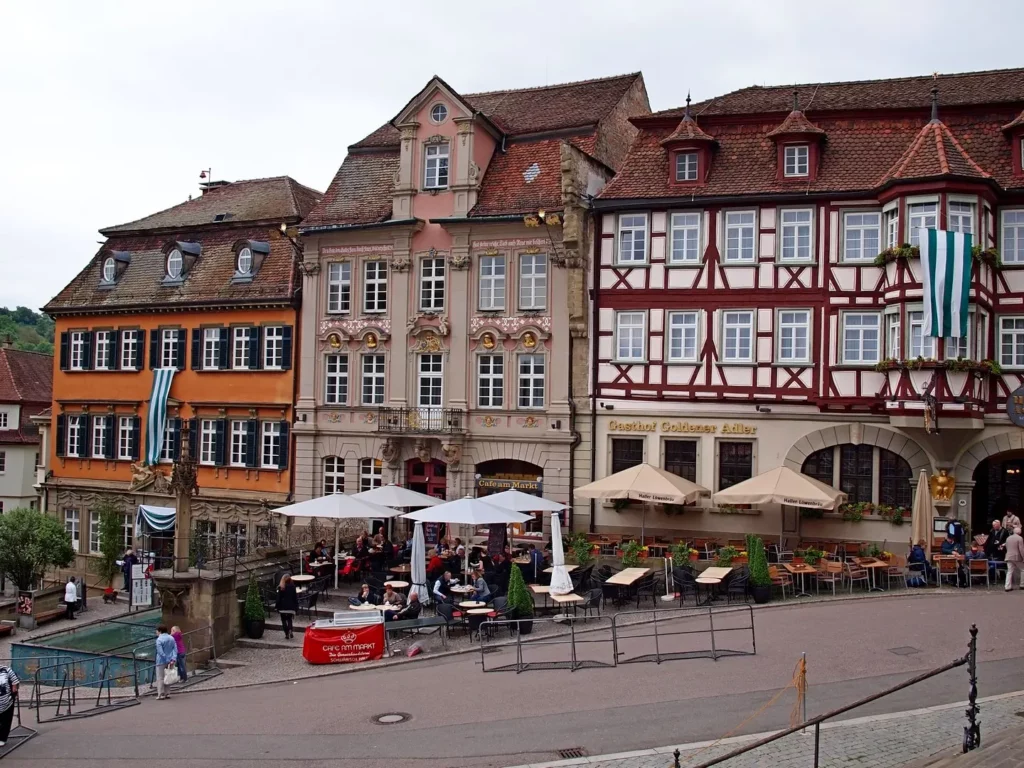

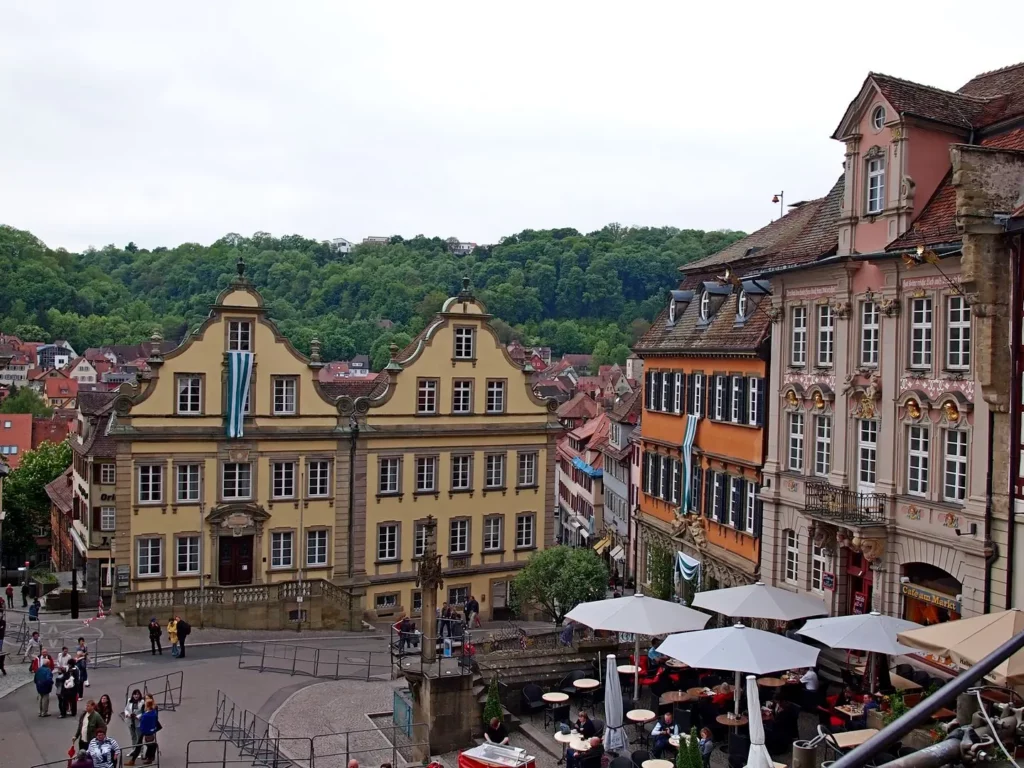

The church of St. Michael (12-15 centuries) with the figure of the Archangel Michael (late 13th century) is especially interesting. You can climb the church tower.
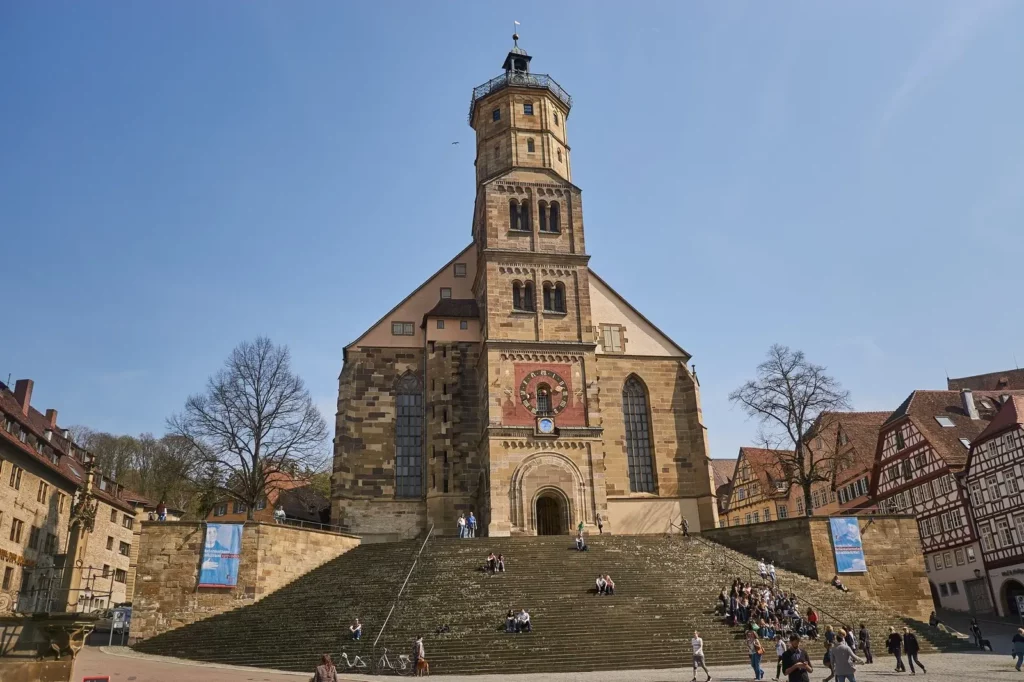
In front of the church – I would not be surprised if it is one of a kind – a steep and long staircase of 52 steps. Somehow they manage to play performances on it, although my head is spinning, even if I’m just standing there. The theater festival is one of the city’s annual attractions, as is the Pie and Spring Festival.
Let’s estimate the stairs. In the second photo there is a child too.






The market square is located at the very top of the slope, and now we will go down to the river, to the most postcard place.
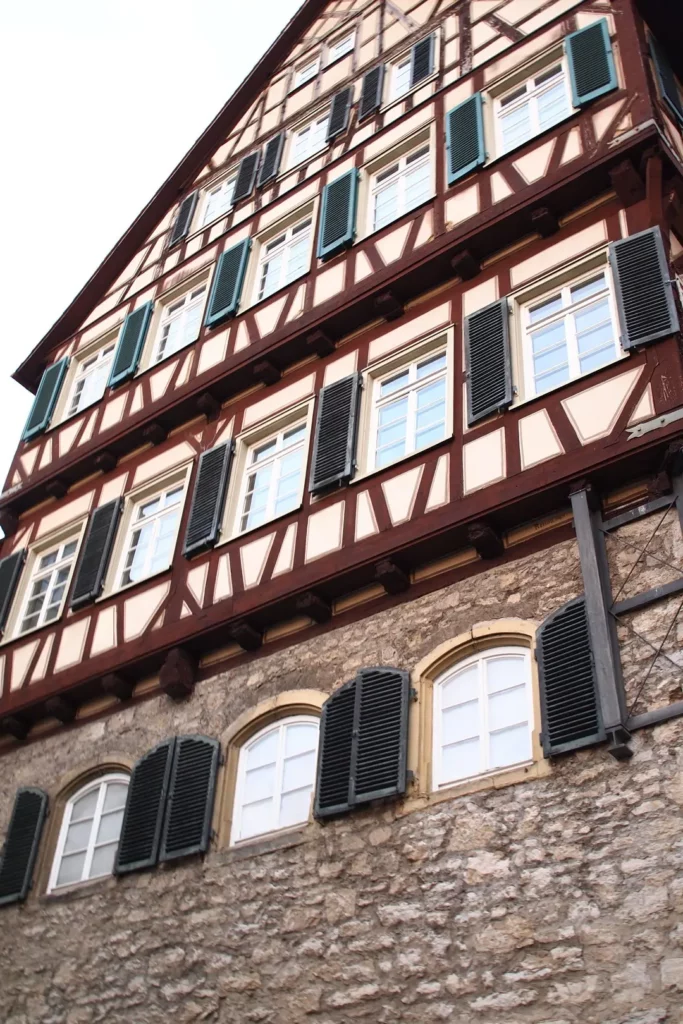





The island hosts the main part of the Pie and Spring Festival performances.




Next – Schwäbisch Hall. 2. Pie and Spring Festival, Comburg, museums.
Do you enjoy the site without cookies? This means that I work for you at my own expense.
Perhaps you would like to support my work here.
Or change your cookie settings here. I don’t use personalized ads






